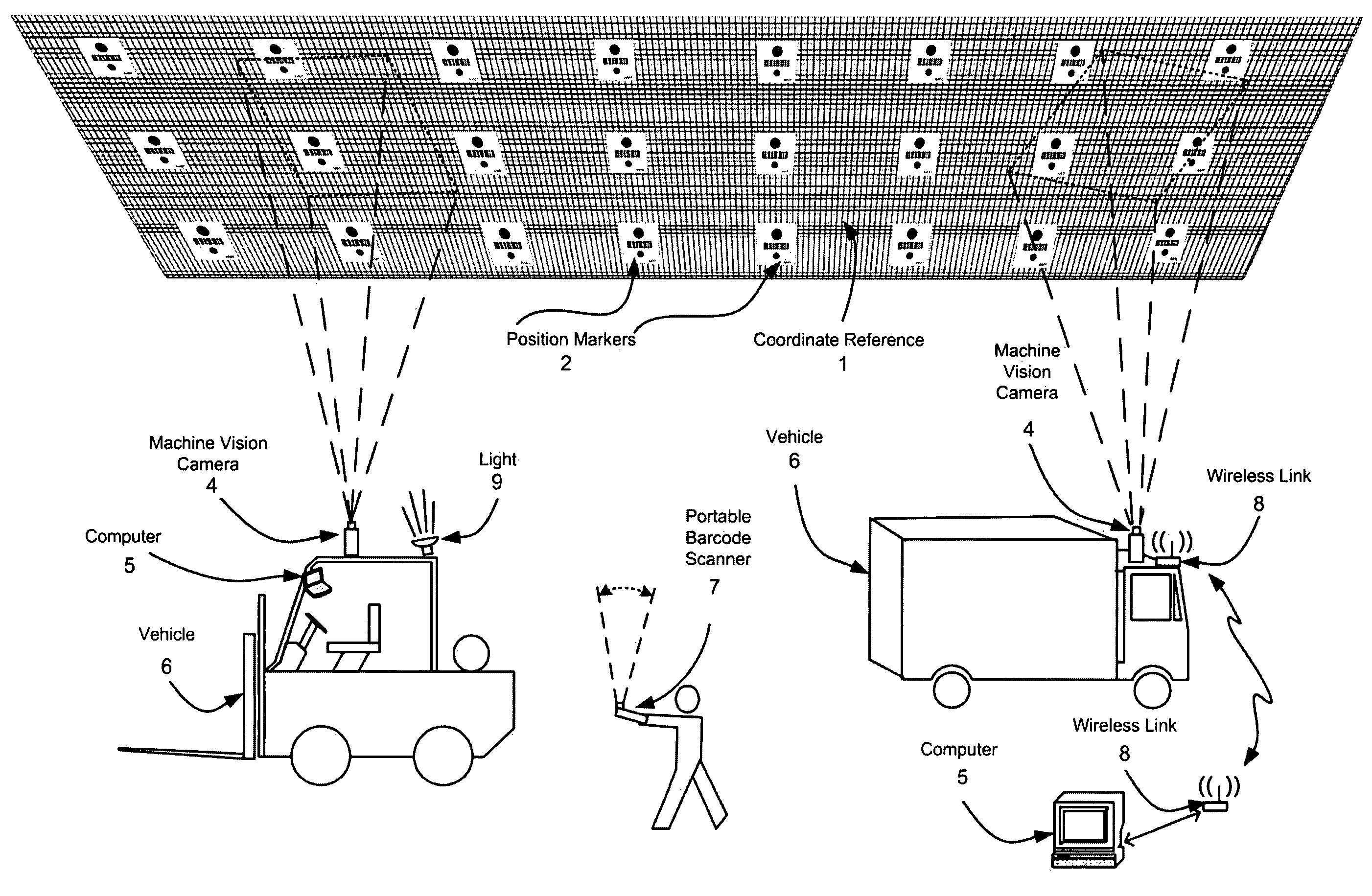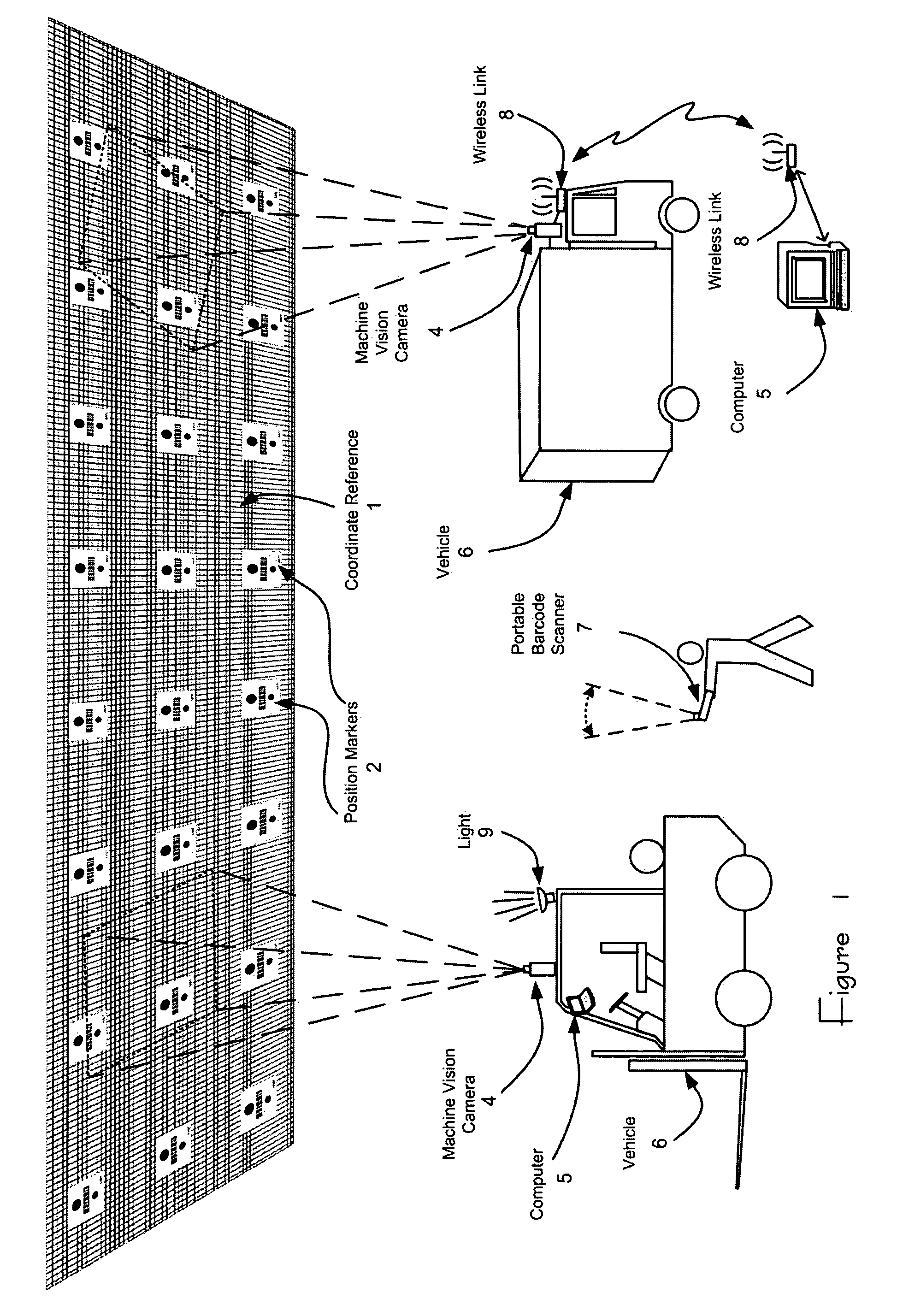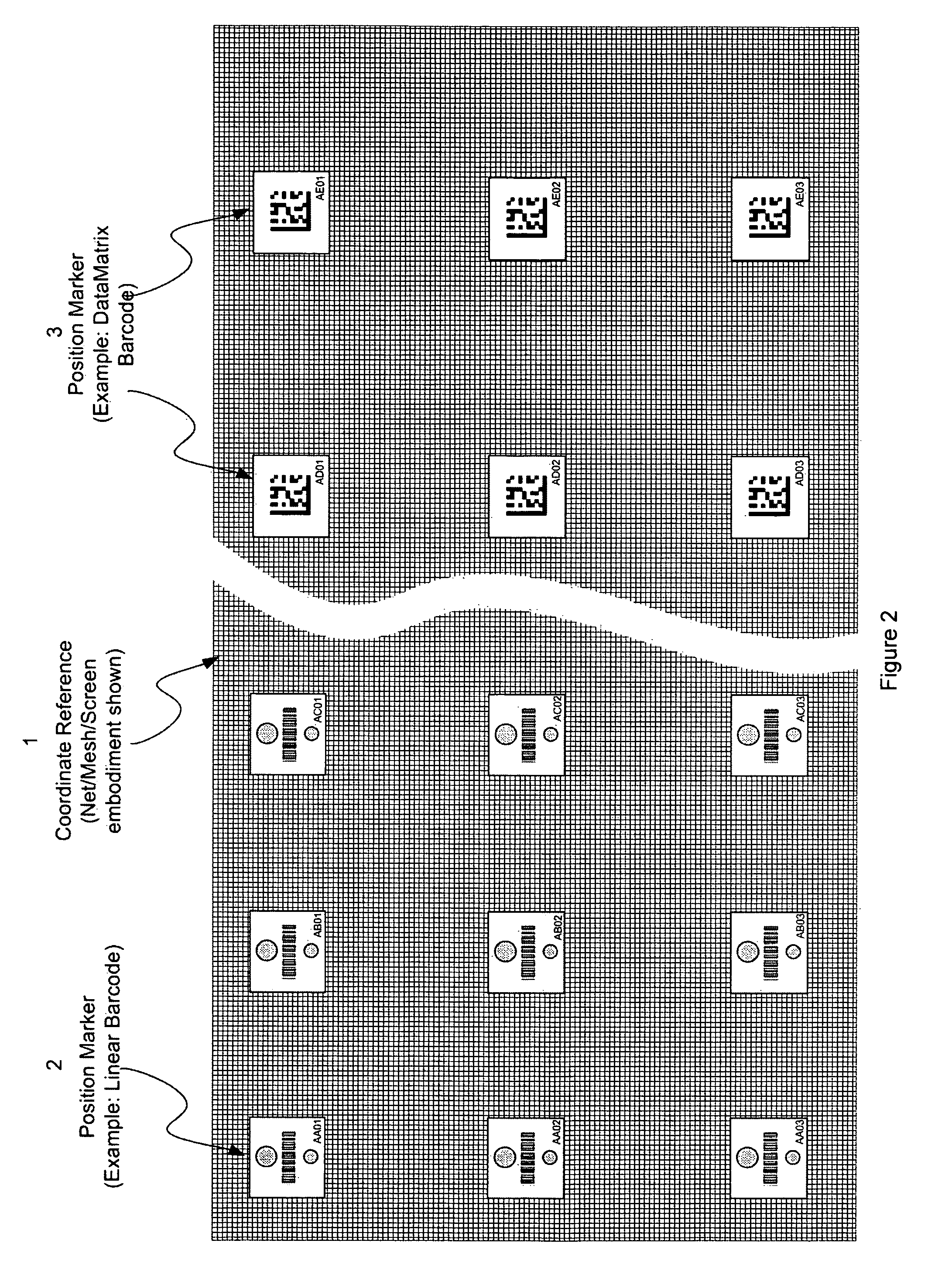Method and apparatus for determining position and rotational orientation of an object
a technology of rotational orientation and position information, applied in the direction of process and machine control, instruments, electromagnetic radiation sensing, etc., can solve the problems of lack of positional determination, lack of method development, and inability to provide angular orientation information such as attitude, direction or heading, and achieve accurate determining of position and rotational orientation
- Summary
- Abstract
- Description
- Claims
- Application Information
AI Technical Summary
Benefits of technology
Problems solved by technology
Method used
Image
Examples
second embodiment
Description of the Second Embodiment
[0095]Referring to FIGS. 1 and 2, a second embodiment will now be described. Steps omitted are assumed to be unchanged from the preferred embodiment. This embodiment utilizes two-dimensional bar codes. Coordinate reference 1 consists of position markers 3 (FIG. 12), which are fabricated of labels 3b and substrates 3a. Bar code symbols, each containing a unique identification encoded in two-dimensional bar code symbology are printed on the label stock, along with human readable text. Bar codes of standard formats can be used including DataMatrix, Code One, PDF417, Array Tag, and QR Code. DataMatrix symbols are chosen in this embodiment for their ubiquitous usage, error correction robustness, and well developed suite of image processing software available in commercial machine vision systems.
Image Capture and Marker Identification (100, 110, 120, 130, and 300)
[0096]Referring to FIGS. 1, 8, 17, 18, and 19, the following steps take place. The machine ...
third embodiment
Description of the Third Embodiment
[0101]The invention can operate in a second physical arrangement wherein the camera is fixed in space and the markers are affixed to movable objects. FIG. 20 presents an application example, where machine vision camera 4 is mounted overhead and a position marker 2 or 3 is affixed to a vehicle. The camera views a predetermined area as vehicle 6 moves about the area. The marker is within the field of view so long as the vehicle remains within the predetermined area. Image processing steps are identical to embodiment 1 and 2, with the exception that camera coordinates in real space are used as a reference point, and object coordinates are calculated from image data. Image analysis steps are identical to earlier examples, but the transformation of image data into of position data differs; in this arrangement the system determines where a viewed object is located instead of determining where the system itself is located. Orientation is calculated direct...
PUM
 Login to View More
Login to View More Abstract
Description
Claims
Application Information
 Login to View More
Login to View More - R&D
- Intellectual Property
- Life Sciences
- Materials
- Tech Scout
- Unparalleled Data Quality
- Higher Quality Content
- 60% Fewer Hallucinations
Browse by: Latest US Patents, China's latest patents, Technical Efficacy Thesaurus, Application Domain, Technology Topic, Popular Technical Reports.
© 2025 PatSnap. All rights reserved.Legal|Privacy policy|Modern Slavery Act Transparency Statement|Sitemap|About US| Contact US: help@patsnap.com



